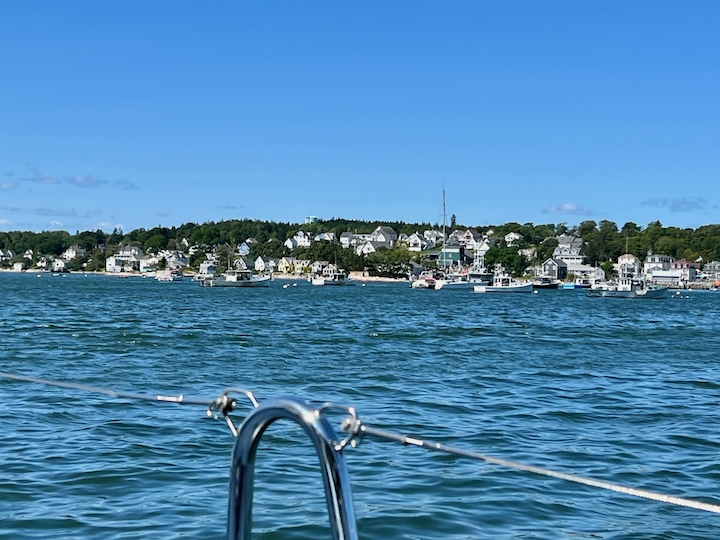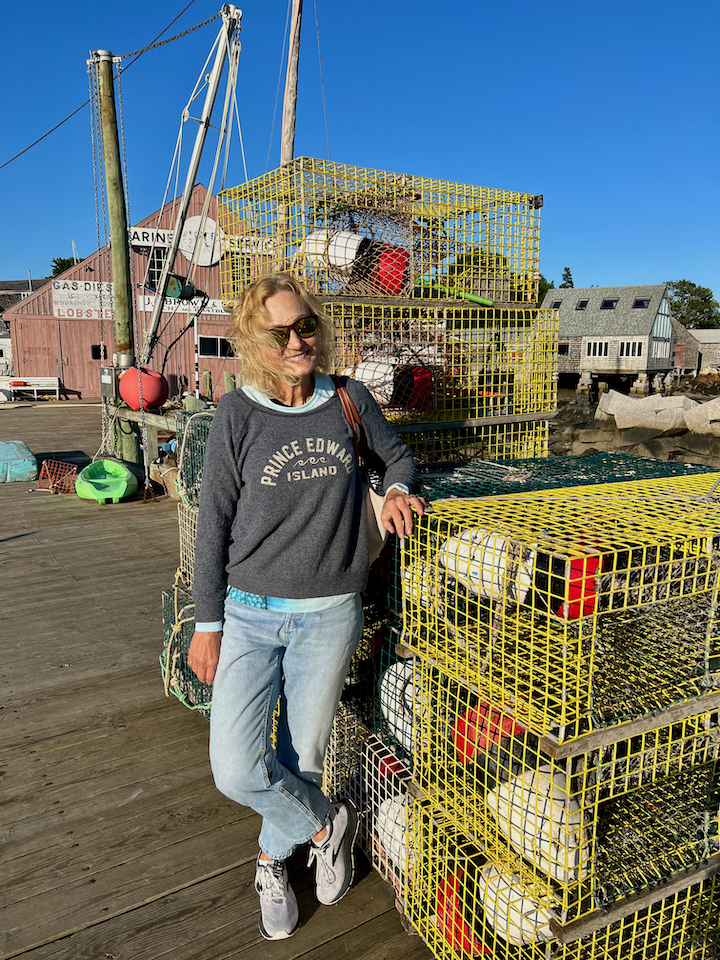
We held Wednesday in Southwest Harbor as it was raining all day and better weather was promised just around the corner. On Thursday, we left Mount Desert Island and sailed into the Penobscot Bay, anchoring near North Haven for the night.
Southwest Harbor, like many small Down East Maine towns, consisted essentially a working lobster wharf, scattered houses and a Main Street, with a shop or two, maybe a restaurant, a micro-library and a post office. People are friendly, in an understated way. Not a lot of talk and fuss, but always kind, generous and willing to help a stranger.
Thursday morning, we pushed on into the Penobscot Bay at the mouth of the Penobscot River. The river, named after the local indigenous tribe, originates in Millinocket, runs through Old Town, where the canoes are made, Orono, where the University of Maine is located, Bangor, one of Maine’s larger cities and major logging towns in its day (and Dan’s home for a year in the mid 1970s), past Belfast, a major seaport and shipbuilding town in the 19th century, and Castine, home of the famous Maine Maritime Academy, before letting out into the bay.
The Penobscot Bay is among the finest cruising grounds in the Northeast (and we would argue in North America) with uncountable islands, coves and inlets. It is sprinkled with charming towns such as the working lobster ports of Stonington, Vinalhaven, North Haven, and the yachting centers of Camden and Rockland, to name a few.
The sail down was challenging. Winds were gusty up to 22 knots, sea state varied from smooth Atlantic swells to 4 foot waves but it was a great sail with True North dong what she does best, making 7 to 8.5 knots over water. And of course, there were lobster pots everywhere. We wore our headsets because of the wind noise. Sandy stood on lookout giving pot-avoidance instructions to Dan at the helm. Some traps have two buoys so that when one is submerged at high tide, the other one takes over. However, at lower tides, they are both afloat and the line that connects them is now horizontal. Because of the strong current, some of these buoys are completely submerged. We lived our worst nightmare! Two submerged buoys appeared out of nowhere a few feet in front of the boat. It was too late to avoid them. Everything happened in slow motion. The buoys disappeared. We assume the keel caught the line between them. With the momentum of the boat moving at 7-8 knots, we dragged the whole rig for a moment. We felt resistance but didn’t screech to a halt. Fortunately we were sailing and not motoring so the prop was folded back. After a few seconds that seemed like an entity, we saw the buoys pop back out of the water astern. We think the pitch of the keel, the downward pull of the traps, and the forward motion of the boat dragged the buoys deeper until they cleared the underside of the keel. They fortunately skipped the sail drive and maybe the rudder, and eventually worked free of the boat. They say the best way to overcome fear is to face the thing you’re afraid of. Well “they” are wrong. Now that we’ve experienced snagging a lobster rig, we’re still terrified of them!!!
We found a calm anchorage near North Haven from which we dinghied into town. We found a rustic “community center” where we enjoyed a beer on the front lawn among local folks and a handful of tourists.
The day was capped off by the most spectacular moonrise we’ve seen yet!















